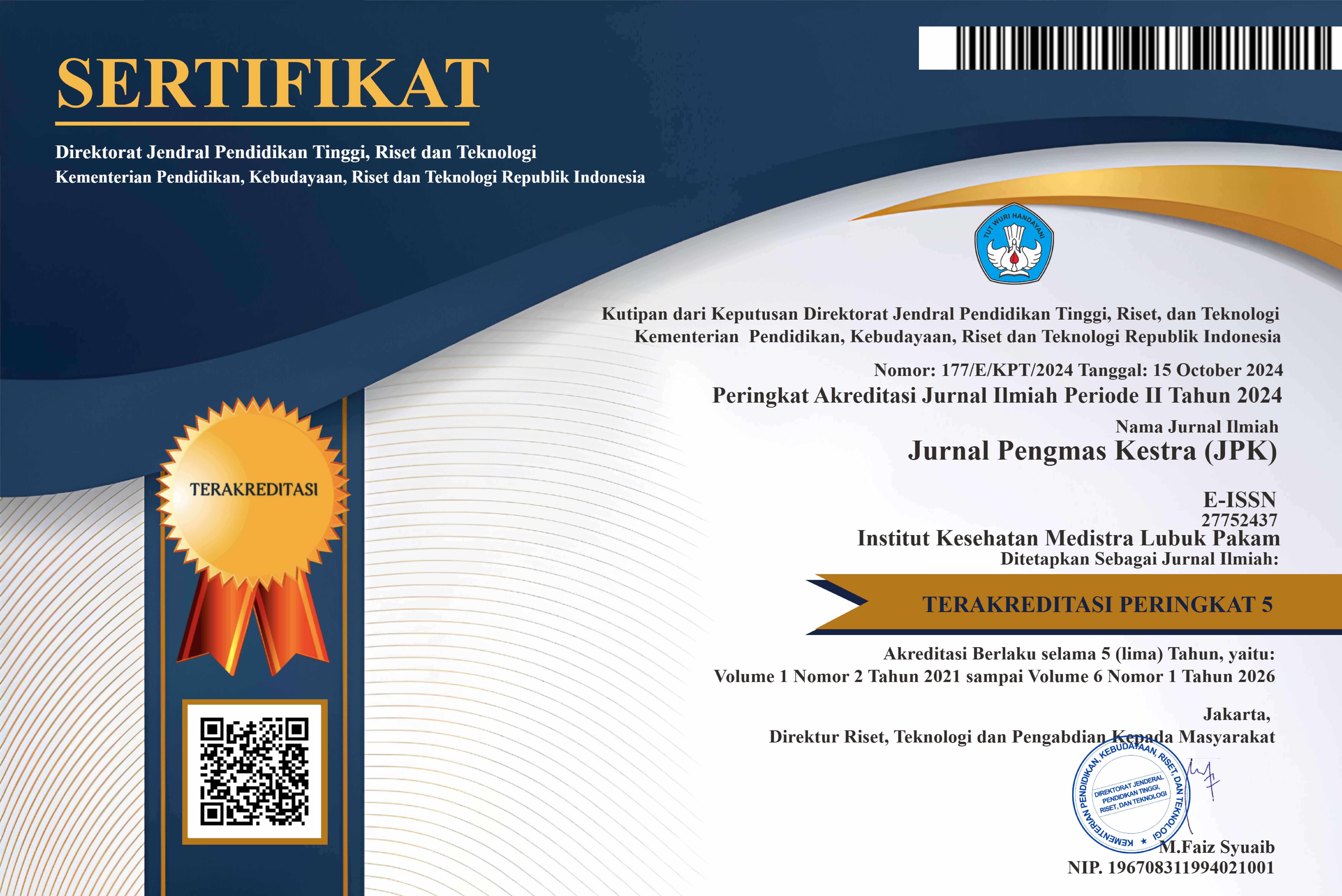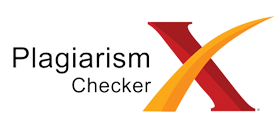Empowering Mothers in Preventing Post Partum Depression Through Giving Meridian Accupoint Masssage
DOI:
https://doi.org/10.35451/jpk.v3i2.1982Keywords:
Empowerment; post partum; depression; meridian accupoint massageAbstract
Post partum depression is a serious disorder that occurs during the post partum period and can disrupt the activities of the mother and baby for a long period of time. One strategy to prevent post partum depression is by giving meridian accupoint massage. This intervention can be given during the normal postpartum period starting on the first day. Prevention is the best action that can reduce the mother's risk of developing post partum depression. The aim of this service community is to help pregnant women and post partum mothers empower themselves by knowing how to prevent post partum depression through meridian accupoint massage intervention. The target of this research was pregnant women and post partum mothers who were at the Nining Pelawati Lubuk Pakam Clinic, totaling 27 participants. The activity method was carried out twice by giving a pre-test, lecture, question and answer and role play and continued with the post-test by filling in a questionnaire. Evaluations were carried out on mothers by conducting interviews regarding their understanding of preventing postnatal depression. The results achieved in this activity are that people gain knowledge about postnatal depression. There was a change in the value of understanding knowledge before being given education, 8.85 and after being given health education, it became 15.6. It is hoped that this service activity will provide benefits to mothers in carrying out meridian accupoint massage interventions to prevent post partum depression. Midwives can apply meridian accupoint massage as a form of preventing post partum depression during the post partum period.
References
Au, D. W., Tsang, H. W., Ling, P. P., Leung, C. H., Ip, P. K., & Cheung, W. M. (2015). Effects of acupressure on anxiety: a systematic review and meta-analysis. Acupuncturein Medicine, 33(5), 353-359.
Cardaillac, C., Rua, C., Simon, E. G., & El-Hage, W. (2016). Oaxytocin and postpartum deparession. Journal de gynecologie, obstetrique et biologie de la reproduction, 45(8), 786-795.
Chen, H. M., Wang, H. H., Chiu, M. H., & Hu, H. M. (2015). Effects of acupressure on menstrual distress and low back pain in dysmenorrheic young adult women: an experimental study. Pain Management Nursing, 16(3), 188-197.
Dansaher, B. G., Milgrom, J., Seeley, J. R., Stuart, S., Schembri, C., Tyler, M. S., ... & Lewinsohn, P. (2013). MomMoodBooster web-based intervention for postpasrtum depression: feasibility trial results. Journal of medical Internet research, 15(11), e242.
Huang, R., Yan, C., Tian, Y., Lei, B., Yang, D., Liu, D., & Lei, J. (2020). Effectiveness of peer support intervention on perinatal depression: A systematic review and meta-analysis. Journal of Affective Disorders, 276, 788-796.
Hayoun, D. H. B., Sultan, P., Rozeznic, J., Guo, N., Carvalho, B., Orbach-Zinger, S., & Weiniger, C. F. (2023). Association of inpatient postpartum quality of recovery with postpartum depression: A prospective observational study. Journal of Clinical Anesthesia, 91, 111263.
R. Rubin, “Postpartum Depression Persists Longer Than Previously Thought,” JAMA, vol. 324, no. 24, p. 2475, Dec. 2020.
Steel, Z., Marnane, C., Iranpour, C., Chey, T., Jackson, J. W., Patel, V., & Silove, D. (2014). The global prevalence of common mental disorders: a systematic review and meta-analysis 1980–2013. International journal of epidemiology, 43(2), 476-493.
Wang, J. F., Tan, L. J., Mei, Q. X., Zheng, Q. H., Yang, S. B., & Mei, Z. G. (2017). Meta anaklysis on acupuncture for postpartum depression. World journal of acupuncture-moxibustion, 27(1), 28-34.
Wilson, N., Lee, J. J., & Bei, B. (2019). Postpartum fatigue and depression: a systematic review and meta-analysis. Journal of affective disorders, 246, 224-233.
Downloads
Published
Issue
Section
License
Copyright (c) 2023 Diah Evawanna Anuhgera, Nikmah Jalila Ritonga, Riris Sitorus

This work is licensed under a Creative Commons Attribution 4.0 International License.
Copyright in each article is the property of the Author.




















